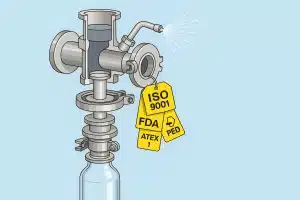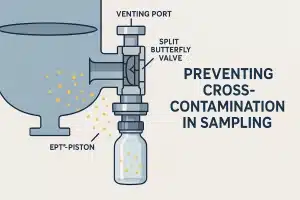In today’s fast-paced manufacturing landscape, maintaining safety standards is crucial, especially in sectors like food, pharmaceuticals, and biotechnology. A key component in achieving these standards is the use of specialized sanitary sample valves. This article explores the essential functions, benefits, and applications of these valves in manufacturing processes.
What Are Sanitary Sample Valves?
Sanitary sample valves are designed to extract samples from processing systems without compromising the cleanliness and integrity of the product. They are primarily utilized in sectors where hygiene is critical, complying with stringent sanitary standards to prevent contamination and uphold product integrity.
Importance of Sanitary Sample Valves
1. Control Measures
One of the primary functions of these valves is to facilitate effective control measures. By enabling the extraction of samples without introducing contaminants, manufacturers can perform routine testing to confirm their products meet required specifications. This is vital in sectors where even minor deviations can pose significant safety concerns.
2. Compliance with Regulations
Manufacturers must adhere to strict regulatory standards that govern product safety. Sanitary sample valves play a vital role by allowing accurate sampling without contamination, which is essential for passing inspections and maintaining certifications—key factors that can provide a competitive edge.
3. Process Optimization
These valves also contribute to process optimization. By providing real-time data on product integrity, they enable manufacturers to make informed decisions, thereby reducing waste and maintaining smooth production runs under varying pressure conditions. This can lead to increased efficiency and higher profit margins.
Design Features of Sanitary Sample Valves
These valves are crafted with several key features that enhance their functionality:
1. Materials
Constructed from high-grade stainless steel, particularly 316L, these valves are resistant to corrosion and easy to clean. This choice of material ensures they do not react with the products being sampled, preserving sample integrity.
2. Hygienic Design
The design prioritizes hygiene, featuring smooth surfaces that minimize bacterial buildup and facilitate easy cleaning. Many are also self-draining, ensuring no residues remain after use.
3. Easy Operation
Most valves are designed for straightforward operation, often equipped with ergonomic handles or automated systems to reduce manual intervention. This ease of use allows for quick sampling and minimizes downtime in the manufacturing process. Accessories and fittings can further enhance the adaptability of these valves in various systems.
Applications of Sanitary Sample Valves
These valves find applications across various sectors, each with specific requirements:
1. Food and Beverage
In this sector, they are essential for testing product integrity, ensuring that sampling is conducted without introducing contaminants to maintain safety standards.
2. Pharmaceuticals
The pharmaceutical sector relies on these devices for producing drugs and biologics, allowing for rigorous control measures and compliance with regulations during various production stages.
3. Biotechnology
In biotechnology, where precision and cleanliness are crucial, sanitary sample valves enable sampling of cultures and other sensitive materials, maintaining sample integrity vital for research and development.
Benefits of Using Sanitary Sample Valves
1. Enhanced Product Safety
The foremost advantage is improved product safety. By preventing contamination during sampling, manufacturers can guarantee their products are safe for consumer use.
2. Increased Efficiency
Sanitary sample valves contribute to operational efficiency by allowing for rapid and effective sampling, minimizing downtime and streamlining processes.
3. Cost-Effectiveness
Although the initial investment may be higher than standard valves, the long-term savings from reduced waste and enhanced control measures can make them a cost-effective choice.
Specific Valve Types and Applications
Best Practices for Implementing Sanitary Sample Valves
1. Regular Maintenance
To maintain optimal performance, routine inspections, cleaning, and replacement of worn parts are essential. Keeping valves in top condition helps maintain their effectiveness and lifespan.
2. Training for Operators
Proper operator training is crucial for maximizing the benefits of sanitary sample valves. Training should cover correct procedures for sampling, cleaning, and maintenance to ensure consistency and integrity.
3. Compliance Audits
Conducting regular compliance audits can help identify potential issues and verify adherence to all relevant regulations and standards. This safeguards the privacy of customers and prioritizes their safety.
Conclusion
Sanitary sample valves are essential for maintaining safety in manufacturing processes, especially in hygiene-critical sectors. By facilitating effective control measures and optimizing processes, these devices are invaluable for manufacturers. Their hygienic design, constructed from durable materials like stainless steel, and ease of use make them a necessary investment for any organization dedicated to delivering safe products. Understanding their importance allows manufacturers to enhance operational efficiency and maintain product integrity.
As industries continue to evolve, the role of these valves will remain vital in upholding the highest standards of safety in manufacturing processes. For personal service and expert advice on fitting the right valves for your needs, contact us to maximize your operational efficiency.





